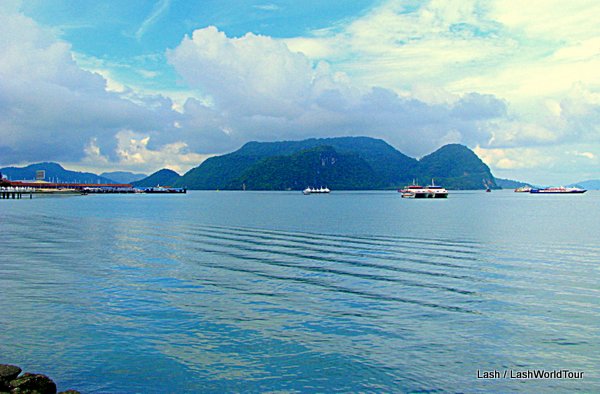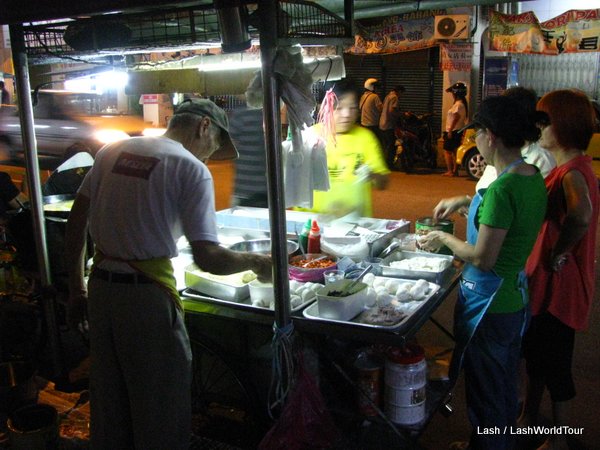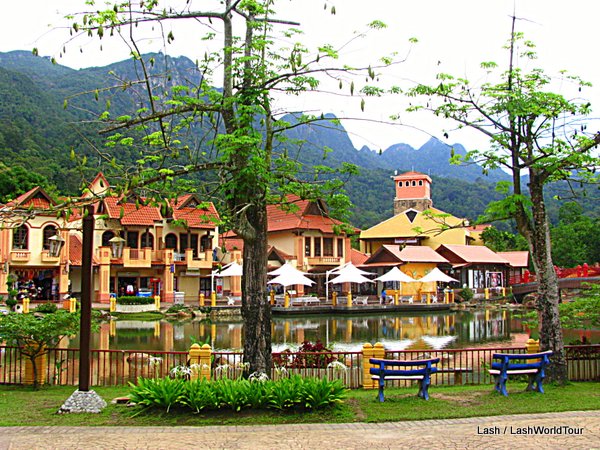TRAVEL TIPS: GREAT CULTURAL THINGS TO DO IN LANGKAWI ISLAND
While Langkawi is first and foremost a little-disturbed natural paradise, with plenty of great outdoor adventures for nature lovers, several interesting and educational cultural attractions also are available on the island. Learn all about rice cultivation, the use of local plants for cooking and medicinal purposes, Malaysian arts such as batik and silver jewelry making, interact with water buffalo, and learn other aspects of traditional Malaysian life. Here are 5 worthwhile cultural places/activities as well as several I personally recommend skipping:
1. Laman Padi (Rice Museum) free
Laman Padi is a beautiful compound full of rice fields, an extensive herb and flower garden, a museum, a spa, and two restaurants. Run by LADA, Langkawi Development Authority, its aim is to educate visitors about rice cultivation and natural plants & herbs. The unique building designs and layout are similar to Balinese style and exceedingly attractive, though a bit in disrepair these days. The museum and guided tour of the herb garden and rice fields are free. Staff are eager to teach you all about plant uses and rice cultivation as they escort you around the gardens and various rice fields.
Laman Padi is located very conveniently at the north end of Cenang Beach, across from Casa del Mar Resort.
2. Cultural Tour: Untold Stories
cost: 190 RM / $63 US
On this informative, entertaining cultural tour by Dev’s Adventure Tours, you’ll learn all about traditional Malay houses and how their architectural style changed slowly over the course of the colonial trade period. You’ll get to taste and smell native plants while learning about their medicinal and cooking uses. You’ll travel along narrow country lanes around the island. You’ll sample traditional Malaysian sweets and snacks from roadside stalls and Langkawi evening market. You’ll learn a bit about Buddhism and Hinduism while visiting virtually unknown Thai and Hindu cave temples. Finally, you’ll be treated to a home-cooked Indian banana leaf rice meal at the tour guide’s own home while meeting his family! This is a fantastic tour if you’d like to learn more about Malaysian culture and visit spots on the island that you’ll never find on your own.
3. Langkawi Craft Complex free
Although this complex is overwhelmingly a rather expensive shopping complex for Malaysian arts, crafts, and clothes, it’s still worth a visit for its large, very well-done cultural museum and on-site working craftsmen, which are all free to visit.
The large museum shows all aspects of Malaysian art, handicrafts, daily life, and culture via beautiful displays with extensive explanations in English. In other areas of the complex, you can watch artists making batik fabrics, blowing glass, weaving baskets and other woven products, and making Malaysian kites.
The merchandise on sale is all traditional Malaysian goods of very high quality. So even if you’re turned off by shopping on vacation, the products at this complex are worth taking a look at, at least from an art/cultural appreciation point of view.
Warning: The food stall set up in the parking lot serves very bad food.
4. Buffalo Park
admission: 5 RM ($1.65 US) / buffalo riding: 20 RM ($6.50 US) / buffalo-pulled cart: 30 RM ($10 US)
Langkawi’s buffalo park is a working dairy farm- of water buffalo instead of cows. If you’ve never visited a dairy farm before, this is a very interesting chance to learn how to milk cows and to make cheese, ice cream and yogurt. You can also ride a water buffalo, get pulled on a traditional Malay cart by buffalo, or try your hand at milking a buffalo. Their cafe serves ice cream, milk, and cheese made right there on the farm.
5. Langkawi Night Market free to browse
This large roving outdoor market is a typical Malaysian evening market where locals go to buy fresh fruit, cooked meals and sweets, clothes, accessories, and housewares. A few western tourists roam through the aisles, but primarily it’s full of locals. It’s the perfect chance to try out exotic tropical fruits like durian or rambutan, delicious meals, and equally tasty local sweets.
Each night of the week the market sets up at a different location around the island, including Kuah town, behind Cenang Beach, and other spots. Ask your guest house/hotel staff or locals where the market will be set up on your evening of choice. For most travelers, the easiest location is Cenang Beach, currently set up on Thursday evenings.
——————————————————————————————————
Cultural spots worth skipping:
Everyone has own their interests and tastes, of course, including myself. In my opinion, the following ‘cultural attractions’ are worth skipping, mostly because they’re such gimmicky tourist attractions, at least by western standards. However, if you like these kinds of things, no offense intended. Go for it! To each his own.
Eagle square. A gigantic cement eagle statue in Kuah town. You’ll see it anyhow when you arrive.
Legenda Park. A park full of cement statues depicting famous Langkawi legends. The park itself is actually a large, lovely town park set beside Kuah’s beautiful harbor, with a beach, stunning views, and loads of tropical vegetation. If you need to kill some time in Kuah, it’s a nice place to stroll and relax.
Air Hangat. Described as a ‘spa’ hot springs, that’s really stretching the imagination on the definition of ‘spa’! A natural hot spring does indeed exist there, about the size of a large pot. Hot water does flow out into 2 narrow long canals where you could soak your feet, but the water looks terribly dirty and unsanitary. The place has been made into a lovely garden, which could be worth a stroll through if you’re passing by.
Oriental Village Set at the base of Langkawi Cable Car, visitors must unfortunately walk through the ‘village’ to go up the mountain. It’s basically a huge shopping complex and ‘amusement’ center offering pony rides, elephant rides, horse n cart rides.. you get the picture. Something like a mini Disney Land.
————————————————————
QUESTIONS:
What kinds of cultural activities or places do you enjoy when traveling?



















 Hi! I'm Lash, an American nomadic world traveler who's been traveling solo since 1998. I’m passionate about traveling the world nomadically and then sharing it all with you. I hope to inspire you to travel the world, to entertain you with tales from the road, and to help you reach your travel dreams. Welcome!
Hi! I'm Lash, an American nomadic world traveler who's been traveling solo since 1998. I’m passionate about traveling the world nomadically and then sharing it all with you. I hope to inspire you to travel the world, to entertain you with tales from the road, and to help you reach your travel dreams. Welcome! 



